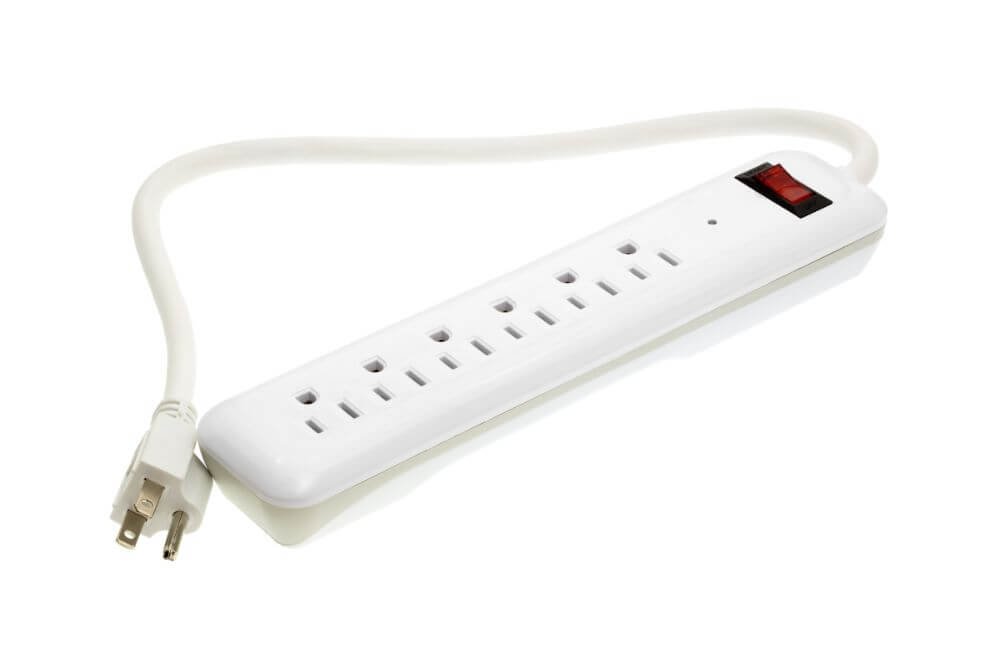When it comes to plugging in and powering all of your favorite electronics, you might be using a power strip or a surge protector. Of course, power strips can be very useful. The fact of the matter is that if you are doing something like setting up a home theater system, you are probably looking to plug in a number of devices.
You might be powering a TV, speakers, a subwoofer, a Blu-Ray player, a video game console and more. This means that a simple dual socket wall outlet won’t be enough. Therefore, you are probably going to be using a power strip that has 6 or more outlets in one unit.
The confusion tends to happen when talking about power strips and surge protectors, because after all, they look more or less the same. So, is a power strip the same as a surge protector? Is there a difference? Is one better than the other?
Power Strip vs. Surge Protector – The Difference
Both the surge protector and the power strip look virtually identical, so what’s the difference? To get the similarities out of the way, both of these things allow you to plug in your electronics, but that’s about it.
Sure, in terms of the look, surge protectors often mimic power strips, but there is one huge difference to keep in mind — surge protectors can absorb and dissipate massive power spikes, whereas as power strips cannot do this.
A power surge may occur due to issues with the large power grid, or you may have large appliances that turn on and off, thus causing heavy power surges. These power surges can and often totally fry electronics.
Such massive energy spikes can damage or just completely break electronics. A surge protector will keep that awesome flat screen in working condition even after such a spike, whereas a power strip cannot.
Surge protectors usually come with something called MOV technology, short for metal oxide varistor. This is a device which takes the extra energy surge and dissipates it into a ground wire instead of allowing the surge to travel to the connected electronics.
With a normal power strip, that surge of energy passes right through to the electronics, damaging or breaking them. In short, a surge protector prevents electronics from getting fried, whereas power strips do not.
Choosing the Right Surge Protector
Now that we have established the difference between surge protectors and power strips, let’s figure out the important factors to look for when shopping for a surge protector.
We assume that if you have expensive electronics, you are now leaning towards surge protectors as opposed to basic power strips, for obvious reasons.

Joules
The most important thing you will want to look for is the surge protection rating in terms of joules. The higher the joules the surge protector in question can handle, the more protection it will provide.
You do want to start off at around 600 joules at the least, but the higher the better. If you can find a decent-priced model with at least 2,000 joules’ worth of protection, then you are definitely on the right track.
Indicator Light
Something else to look for is an indicator light on the surge protector. This indicator light will tell you whether or not the surge protector is functioning and currently providing surge protection.
Durable Build
Needless to say, it is probably worth investing a few extra dollars into a model that is durable. This means having a durable outer shell that can withstand some impact. However, more important is that the surge protector in question is made with flame-retardant materials.
Electrical surges produce excessive heat, which can melt equipment or cause fires. Being able to withstand and deal with that extreme heat is very important. to say the least.
Conclusion
As you can see, when it comes down to it, a surge protector is more or less an upgraded version of a basic power strip. A power strip or power bar can allow you to plug in multiple electronics at once, which is fine, but it won’t provide protection in the event of a power surge.
On the other hand, a surge protector also allows you to plug in multiple electronics and appliances, but at the same time, they also provide a great deal of protection in the event of a power surge.
The big difference is that a TV plugged into a surge protector will continue working after a power surge, whereas a TV plugged into a simple power strip will probably get fried if a surge of excess electricity hits it.

